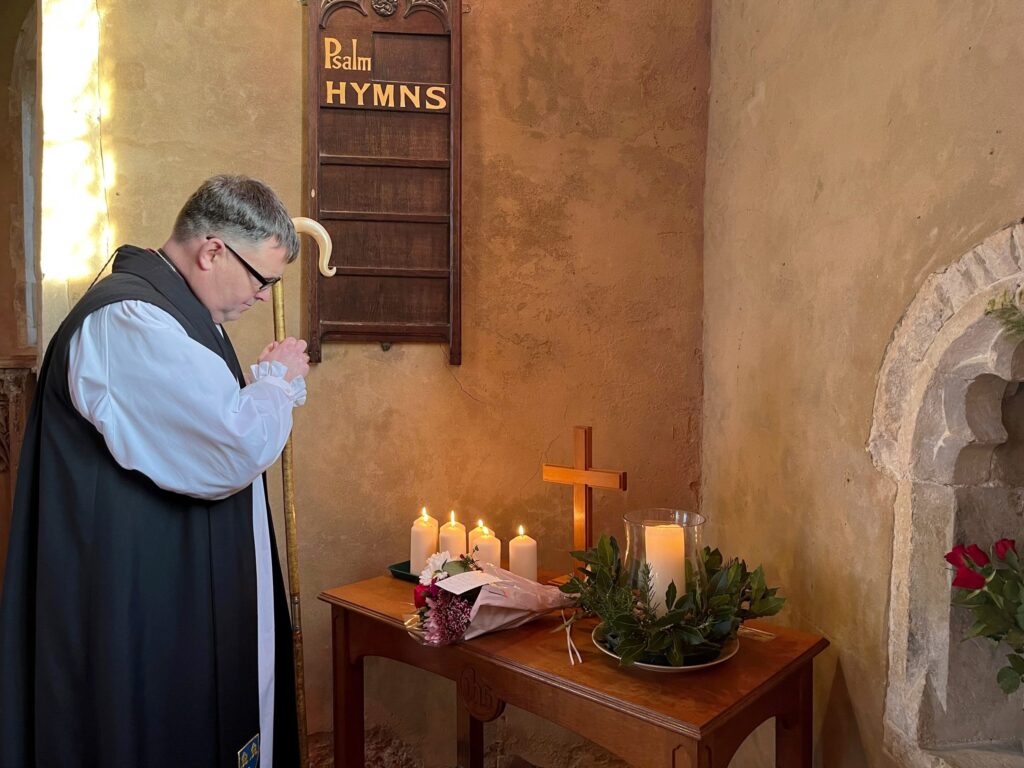“Many waters cannot quench love, neither can floods drown it.”
[Song of Solomon 8.7]
On Sunday, I gathered with people from the community of Sea Palling to remember those lost in the catastrophic tidal surge and flooding that happened seventy years ago today.
They know, all too well, as a tightknit coastal Norfolk village the words from the Song of Songs that ‘many waters cannot quench love, neither can floods drown it’. They know the power of the water and the devastation of floods, because they live within hearing distance of the sea and know its moods. Their forebears in the 13th century saw the neighbouring village of Waxham Parva washed into the sea, including its church.
They also know the spirit of a community that will not be quenched or drowned. That sense of love of neighbour. They showed that spirit when the tidal surge breached the sea defences. It was 5.6 metres, over 18 feet, high. Survivors clung to the roofs of houses in the wet and cold, the salty spray chapping their cheeks and numbing their hands. And as the rescue operation began, seven people were found dead, four from the same family.
Grief hung over these houses for the loss of Doris and her baby Edwin, and her other children Stephen and Merle, and for William and Isabella and Sarah. The Lifeboat Inn was washed away, and the contents of homes ruined. Three bulldozers pushed sand and shingle onto the breach and workers, including 100 locally based airmen, sandbagged the area in a great team spirit.
Edwin would have celebrated his 70th birthday last summer if he had lived, perhaps would have had grandchildren, or even been a churchwarden or local councillor.
As the days followed, reports came in of 300 people dead, and 24,000 homes destroyed along the entire coastline. There was no early warning system, no evacuation procedures in place, and the later inquest concluded, “the worst consequences of this disaster might have been avoided if warning had been sent down the east coast”.
A report into the cause of the flood published in 1954 estimated that the frequency of such storm surges would rise from one in 200 years to one in 100 years by 2054 due to the rise in sea level from the ‘downwarping’ movement in southeast England as it still adjusts to the downward pressure of glaciers in the last Ice Age (and that was before global warming was factored in). That estimate has been revised to one in 75 years.
 As we look around the world, we see communities faced with flooding, rising sea levels and more frequent severe weather events.
As we look around the world, we see communities faced with flooding, rising sea levels and more frequent severe weather events.
The floods in Pakistan last November destroyed 750,000 homes, with another 1.3M damaged. 630 children were amongst the death toll.
In Australia last spring (their autumn) the Archbishop of Canterbury visited and heard from residents who had lost everything in the huge floods: “thank [God] for what progress has been made” he said, “but also cry out, and lament and protest about what needs to be done”.
Similar stories of flooding and tidal surges were shared at the Lambeth Conference of Anglican bishops last summer. I will never forget the bishop of Vanuatu saying, “my islands are sinking under the waves, and no one is listening”.
We here in Norfolk have a solidarity with people around the world.
The threats from the sea have not gone away here or abroad. There was a storm surge of 3.8m ten years ago, the biggest since 1953, and the improved coastal defences and early warning system helped. Coastal erosion brings challenges and huge debates about what to do. Time will only tell whether a managed retreat is better for our communities and their people than a defended coastline.
What continues is the love of neighbour and the strength of our coastal communities even when there is a fragility about some of their futures.

